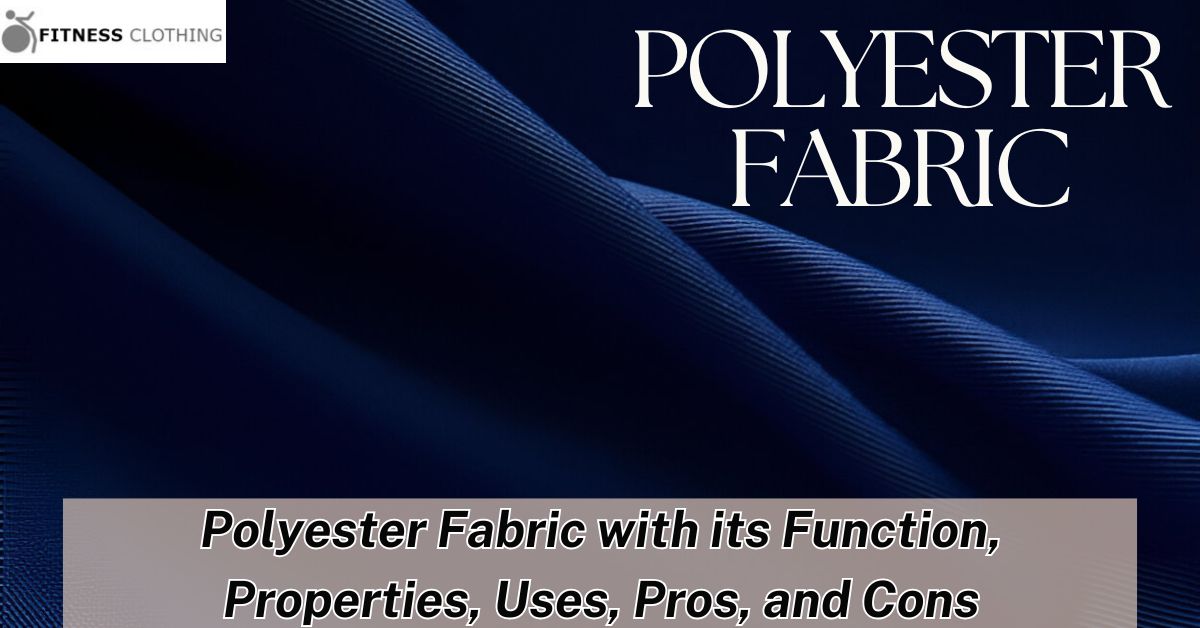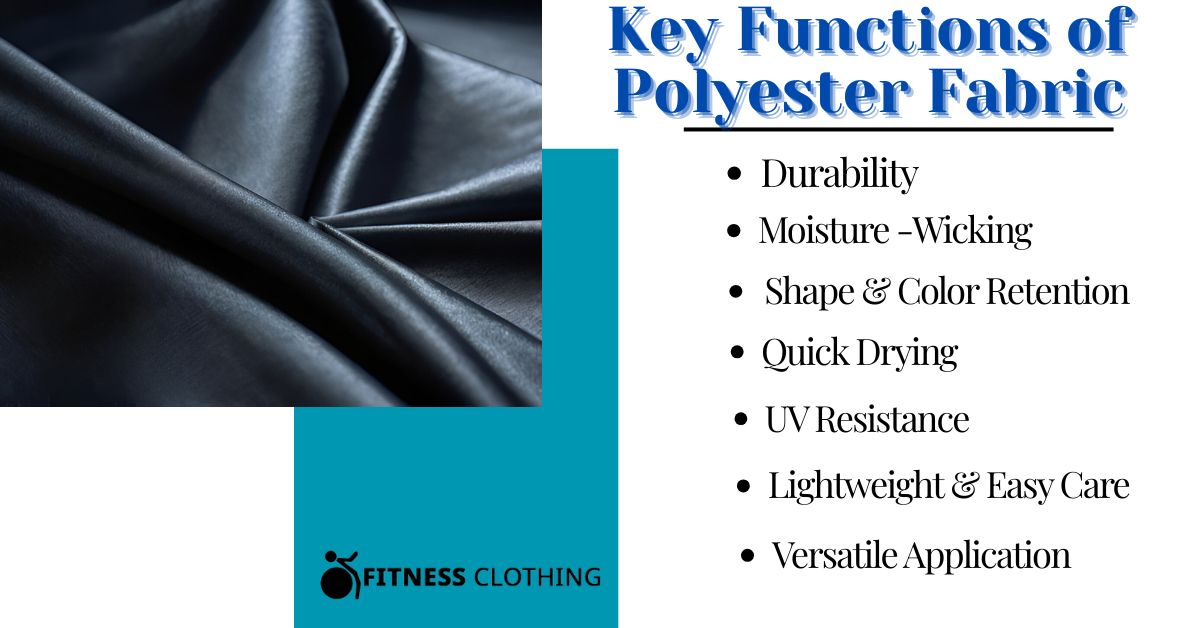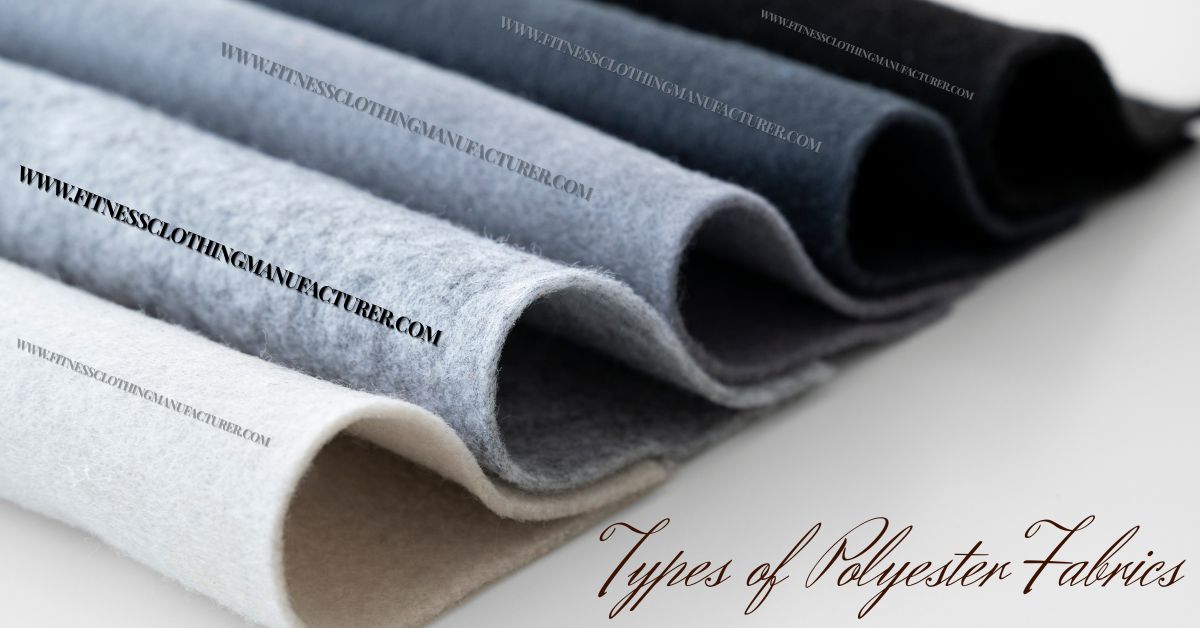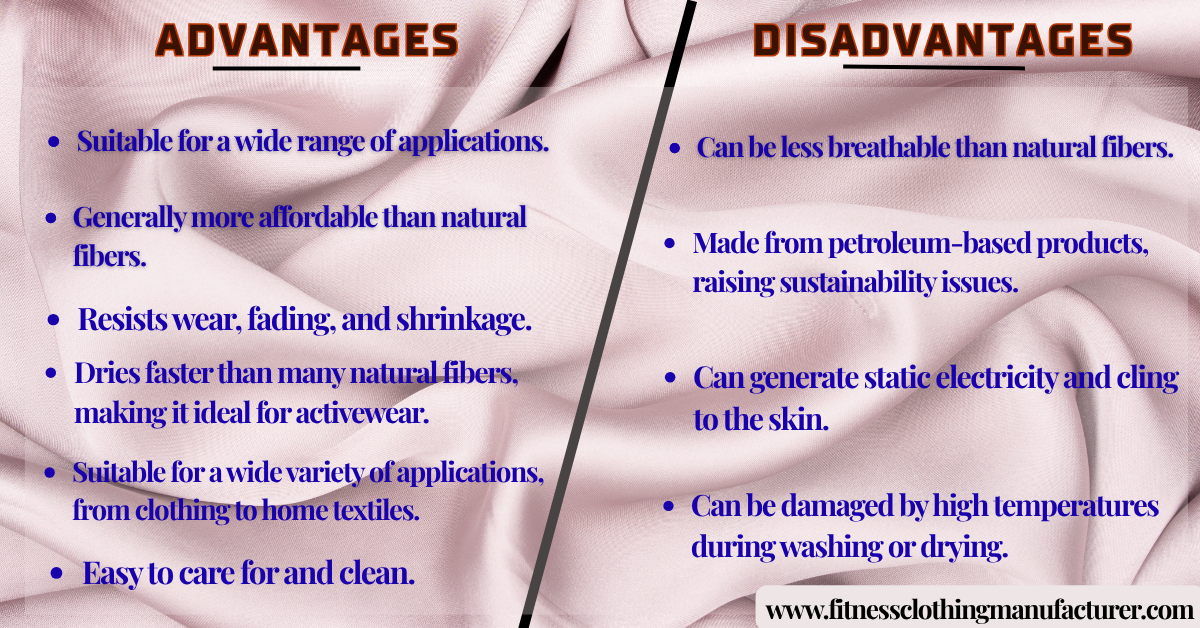Polyester Fabric with Its Function, Properties, Uses, Pros, and Cons

Article Overview
Affordable, durable and versatile, polyester fabric is used in different industries and products today. Take a look at the function, properties, uses, pros and cons of this oft-used fabric. Find out why it enjoys widespread usage today.
How Polyester Fabric is Made?
It is made from polyethylene terephthalate (PET), a compound derived from petroleum. The process of manufacturing starts with polymerization, where terephthalic acid and ethylene glycol are heated for long chain polymer creation. These chains are melted and forced through spinnerets, for creating fine fibers.
Once the fibers are cooled and solidified, they are stretched and drawn, which make them stronger and more flexible. Finally, the fibers are woven or knitted into fabric. This leads to the creation of polyester fabric, which is strong, shrinkage-resistant and comparatively inexpensive to manufacture.

Key Functions of Polyester Fabric
You probably know that the fabric has multiple uses across industries. It is mainly used for creating textiles that are long-lasting, strong and easy to maintain.
As polyester fabric can resist shrinking and stretching, it is used widely in making garments that need to preserve their shape – such as uniforms and athletic wear.
Apart from this, polyester fabric is also ideal for making outdoor gear and active wear, due to its moisture-wicking abilities. You can find it being used as the base material for safety equipment, ropes and conveyor belts in industrial applications where durability and strength are highly valued.
Physical and Chemical Properties of Polyester Fabric
Polyester fabric has outstanding physical and chemical properties. It is abrasion-resistant, strong, lightweight and capable of retaining its shape. It is moisture-resistant and can dry quickly, which makes it ideal for people with active lifestyles or living in wet environments. It is also highly resistant to sunlight exposure and wrinkles.
However, polyester fabric is a synthetic material. Naturally, it is not breathable. It may trap sweat and heat, which make it less comfortable for warm weather conditions.

Different Types of Polyester Fabrics
You can find polyester available in varied forms. Polyethylene Terephthalate (PET) is used most often, such as for making apparels and home textiles. Poly-1, 4-Cyclohexylene-Dimethylene Terephthalate (PCDT) is one more popular type. It is used for making heavier fabrics, such as curtains and upholstery, ensuring elasticity and more strength.
Microfiber polyester is soft and very fine, often used in bedding and cleaning cloths. Recycled polyester or rPET, is an eco-friendlier alternative, produced from recycled plastic bottles. You can also find polyester blended with cotton, nylon, spandex or other fabrics, making it comfier and better in performance.
Common Uses of Polyester in Everyday Life
Today, you can see polyester fabric enjoying widespread use due to its long-lasting form and affordability. It is often used for making formal wear, sportswear, jackets and T-shirts. It is also often used in making outdoor products like raincoats, tents and backpacks, for its resilience and waterproof form.
The fabric is used in making products widely used around the home, such as upholstery, curtains and bed linens.
It also enjoys wide industrial usage as an essential component in safety harnesses, ropes etc. In the automotive sector, it is used extensively in making seat covers, airbags and seatbelts.

Pros of Polyester Fabric
Polyester fabric has plenty of advantages, which make it more popular. It is resistant to wear and tear, and can last for a long time. Naturally, you can see that it is used for making durable gears and apparels.
The fabric is wrinkle-resistant and can dry fast, which reduces maintenance time. It is also moisture-wicking and can keep wearers dry during intense physical activities.
It is one of the most affordable textiles today, offering fantastic value for performance. It is easy to customize blended polyester fabrics for breathability, stretch or softness, making it more versatile in nature.
Cons of Polyester Fabric
The environmental impact of polyester fabric is one of its major drawbacks. It is non-biodegradable and petroleum-based, which contributes to plastic pollution. Also, it is not breathable, which means wearing polyester clothing can be uncomfortable during warm weather conditions.
Despite being flame-resistant, it can melt at high temperatures and lead to physical injuries upon fire exposure.
Bottom Line
As you can see, the many benefits, uses and properties of polyester fabric make it a favorite. If you have a fitness clothing store, or a retail store or private level business with a fitness clothing section, you will love to source fitness clothing items and fitness gear manufacturer with polyester fabric, to gain a happy customer base. Best of luck!


















